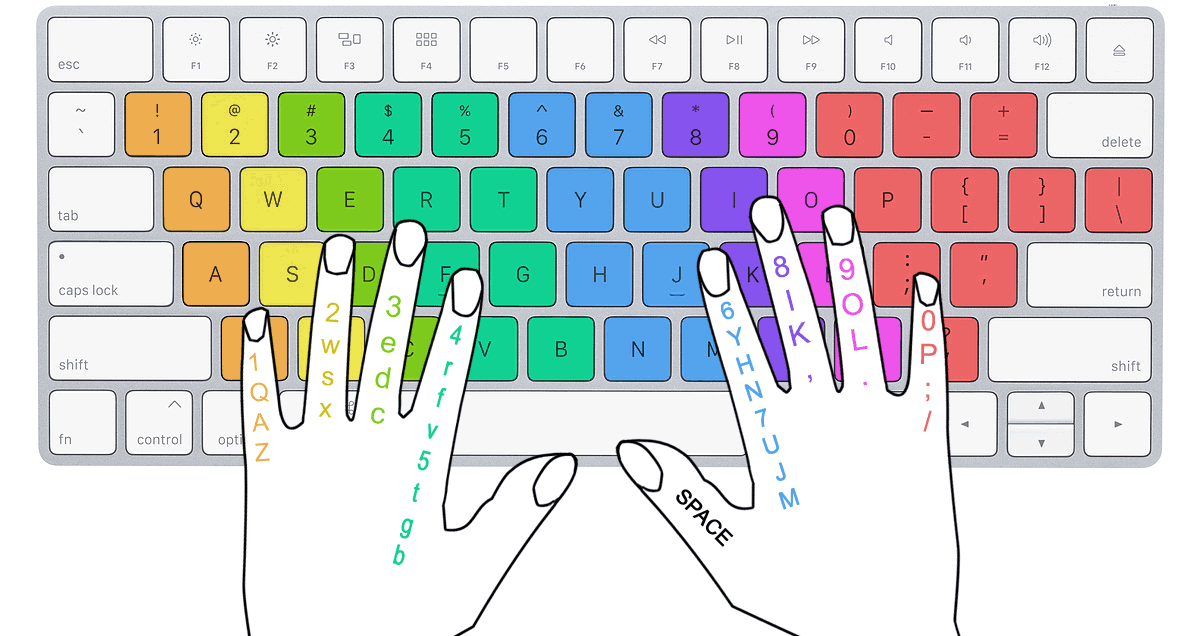This One Skill Can Save You 10 Hours Every Week
 Screenshot by author
Screenshot by author
I wasted ten minutes of the time I gave myself to write this article, playing a game on TypeRush. The speed of your writing determines the speed of your car. And you can compete with other players too.
But why the hell am I playing a game, first thing in the morning when I have other important tasks to do?
Because, whether we realize it or not, our typing speed matters a lot.
A few months back, I was a two-finger typer at best. Meaning, I only used the first two fingers of each hand while typing. That is how most people type.
Or you may be typing like my mom with the “hunt-and-peck” method — that is, using the index fingers of both hands to strike the keys on the keyboard.
Since computers have been an indispensable part of our lives for decades, it’s hard to believe people still don’t know how to type. Even harder it is to believe that kids who grew up with computers are also not familiar with the right typing methods.
The origin, like most problems, is in our education system. Since the 19th century, there’s always been the right way to type, aka “touch typing”. Initially, schools offered typing classes to students.
But over time, as students grew up with mobile phones and computers, schools stopped teaching typing. They thought that kids would already know how to type.
However, they didn’t think about two crucial caveats:
-
Students nowadays type more on their mobile phones than computers. Most kids text on smartphones, not PCs, which leaves no reason to learn keyboard typing unless required otherwise.
-
Since no one teaches them the right way to type, students resort to the easiest methods, i.e, you guessed it, the “hunt-and-peck” mania.
While typing classes are long gone, teachers still spend hours teaching the correct way to hold a pencil and make cursive letters.
The importance given to handwriting and the sheer disregard of typing classes is unreasonable given that typed assignments are often the norm.
But hey, let’s not trash-talk the education system. We’re here to talk about touch typing.
After all this, I’m sure you’re thinking, “Why should I learn touch typing when my current method feels good. I can even type without looking at the keyboard!”
Ah, dear reader, if only it were that easy!
Why Touch Type?
To figure out if you’d actually gain from learning how to touch type, you need to figure out how many words are you typing.
Don’t worry, you don’t need an exact estimate.
Mel magazine found that an average worker types around 3,500 words a day including email, code, instant messages, etc. This number can vary for people like me who write a lot outside their job. Also, they found the average typing speed of a person to be around 38 to 45 WPM.
Here’s some simple math. If it takes you ten minutes to write an email, it will take five minutes if you just double your writing speed. Reducing your email time by 50% creates more space for work that matters.
My writing speed, like most people, was around 45 WPM. With little training — 10 minutes a day for 2 weeks — I was already at 92 WPM (As you can see in the first screenshot).
The most common argument I get from non-touch-typers is that their current writing method serves them really well. And I empathize. You’ve likely followed your own writing method for years. Consequently, you’ve become much faster, albeit using a sub-par method.
But even though you may type fast, you don’t know how much your self-taught methods are costing you. You can still gain a lot from touch typing by pushing further:
Assuming a five-day workweek, 20 workdays per month, and 250 workdays a year, Mel magazine also calculated the amount of time you can save by typing even faster.
If you type at the average speed of 40 WPM, by just going to 70 WPM, you can *save *one week every year**.
If the benefits of touch typing are crystal clear, why do people not do it?
Because it slows you down in the beginning. The two weeks I spent learning how to touch type were the slowest typing weeks of my life. I had to work hard to not resort to my old typing methods.
But once you get the hang of it, there’s no limit to your speed.
Stop Looking at Your Keyboard!
There’s another benefit of touch typing.
Washington Post concluded that even though people can get as fast as touch-typers using their subpar methods, they spend a lot more time looking at their keyboards than at the screen.
This means that the main advantage of touch typing lies not in speed improvements.
It lies in cognitive automaticity.
By not looking at the keyboard to find the next key you want to hit, you can focus on the task at hand.
Switching from thinking about the email you’re typing to thinking about the location of a key is a huge tax on your brainpower.
MIT Technology Review says, “Automaticity takes a burden off our working memory, allowing us more space for higher-order thinking. When we type without looking at the keys, we are multi-tasking, our brains free to focus on ideas without having to waste mental resources trying to find the quotation mark key.”
How to Actually Do It
 onlinetyping.org
onlinetyping.org
The idea of touch typing is simple. Each of the four fingers handles a set of keys on the keyboard. You start by placing your index fingers on “F” and “J” which, if you’ve never noticed, have small bumps. This way you can come back to the starting position without looking down.
From this point onwards, your task is to type with minimum hand movement, only moving the fingers up and down.
There are tons of websites for improving your writing skills.
Apart from TypeRush (which is fun), I used Keybr most times. It trains your weak spots using AI. Using the ring and the little finger can be challenging but you get the hang of it pretty quickly.
Final Thoughts
Forget about deep work, flow, and other productivity hacks.
Typing is the best low-hanging fruit to gain your time back.
If you think about the enormous benefits of doubling your typing speed over the span of a career, there’s no reason to not learn it — especially when it only takes 5–10 minutes a day.
The only question now is — will you do it?
Are you serious about becoming the best version of yourself? Get your free 5-day email course to Master The Art Of Personal Transformation
](https://cdn-images-1.medium.com/max/2000/1*_gr50TpTsPBDeLlaW8viSg.jpeg)